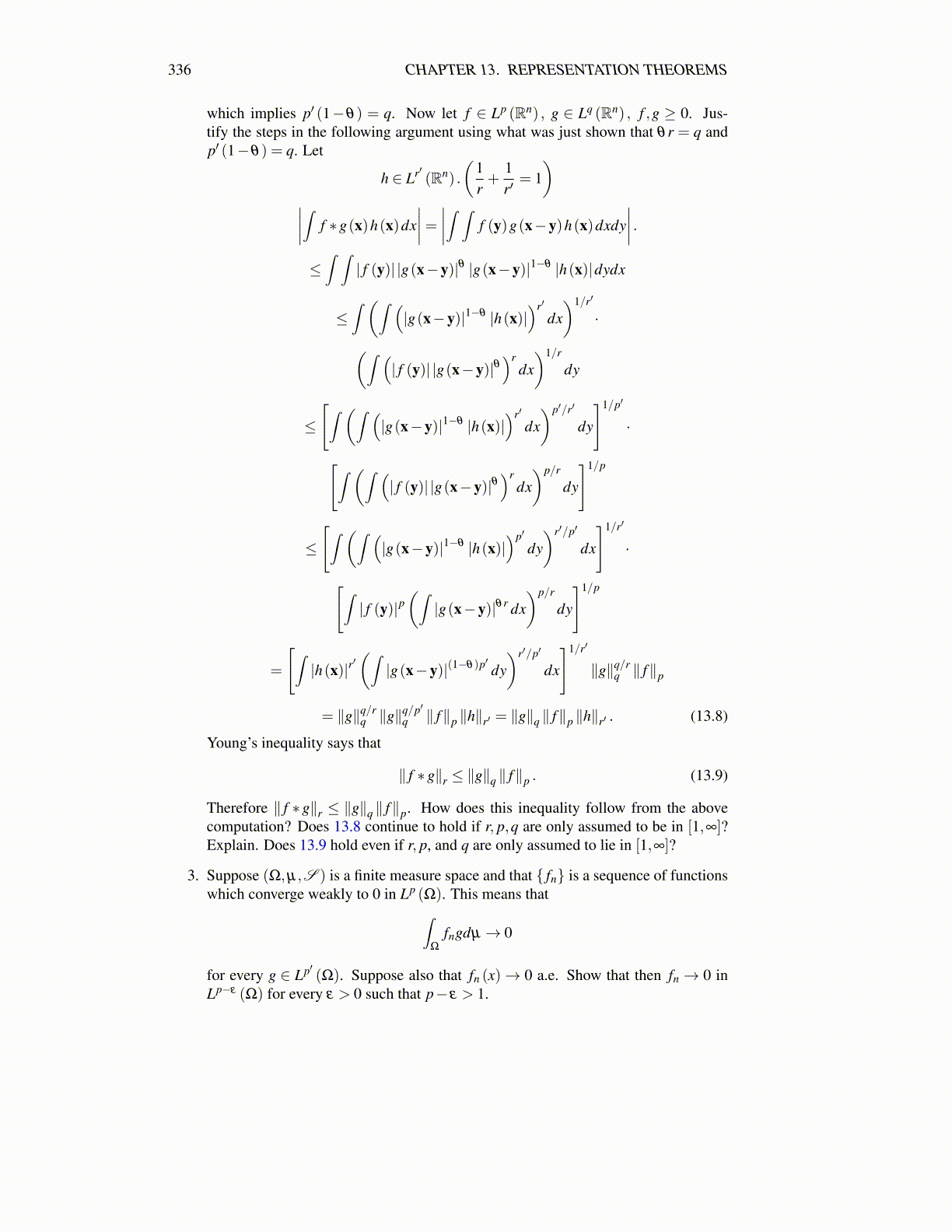
336 CHAPTER 13. REPRESENTATION THEOREMS
which implies p′ (1−θ) = q. Now let f ∈ Lp (Rn) , g ∈ Lq (Rn) , f ,g ≥ 0. Jus-tify the steps in the following argument using what was just shown that θr = q andp′ (1−θ) = q. Let
h ∈ Lr′ (Rn) .
(1r+
1r′
= 1)
∣∣∣∣∫ f ∗g(x)h(x)dx∣∣∣∣= ∣∣∣∣∫ ∫ f (y)g(x−y)h(x)dxdy
∣∣∣∣ .≤∫ ∫
| f (y)| |g(x−y)|θ |g(x−y)|1−θ |h(x)|dydx
≤∫ (∫ (
|g(x−y)|1−θ |h(x)|)r′
dx)1/r′
·
(∫ (| f (y)| |g(x−y)|θ
)rdx)1/r
dy
≤
[∫ (∫ (|g(x−y)|1−θ |h(x)|
)r′
dx)p′/r′
dy
]1/p′
·
[∫ (∫ (| f (y)| |g(x−y)|θ
)rdx)p/r
dy
]1/p
≤
[∫ (∫ (|g(x−y)|1−θ |h(x)|
)p′
dy)r′/p′
dx
]1/r′
·
[∫| f (y)|p
(∫|g(x−y)|θr dx
)p/r
dy
]1/p
=
[∫|h(x)|r
′(∫|g(x−y)|(1−θ)p′ dy
)r′/p′
dx
]1/r′
∥g∥q/rq ∥ f∥p
= ∥g∥q/rq ∥g∥
q/p′q ∥ f∥p ∥h∥r′ = ∥g∥q ∥ f∥p ∥h∥r′ . (13.8)
Young’s inequality says that
∥ f ∗g∥r ≤ ∥g∥q ∥ f∥p . (13.9)
Therefore ∥ f ∗g∥r ≤ ∥g∥q ∥ f∥p. How does this inequality follow from the abovecomputation? Does 13.8 continue to hold if r, p,q are only assumed to be in [1,∞]?Explain. Does 13.9 hold even if r, p, and q are only assumed to lie in [1,∞]?
3. Suppose (Ω,µ,S ) is a finite measure space and that { fn} is a sequence of functionswhich converge weakly to 0 in Lp (Ω). This means that∫
Ω
fngdµ → 0
for every g ∈ Lp′ (Ω). Suppose also that fn (x)→ 0 a.e. Show that then fn → 0 inLp−ε (Ω) for every ε > 0 such that p− ε > 1.